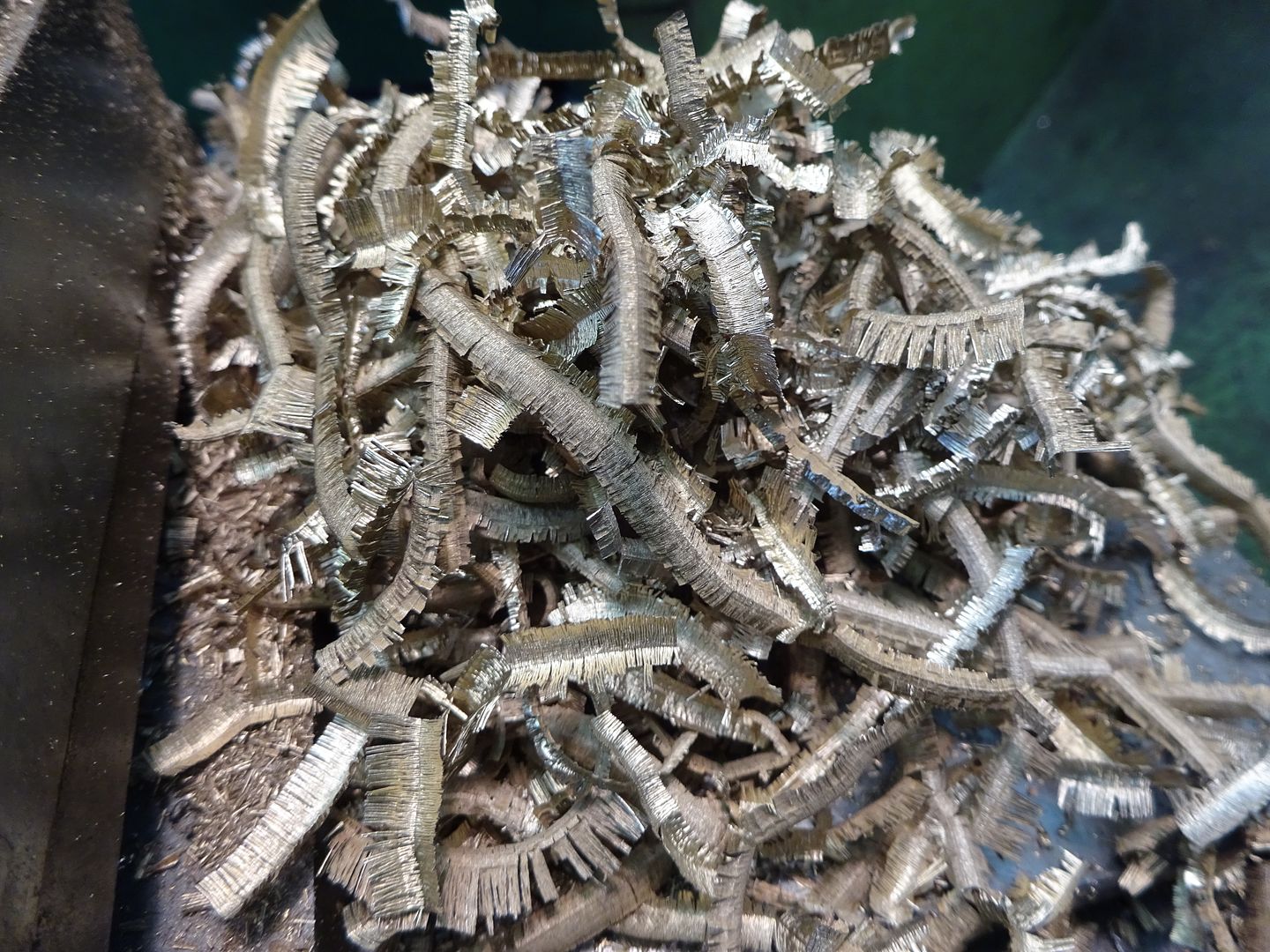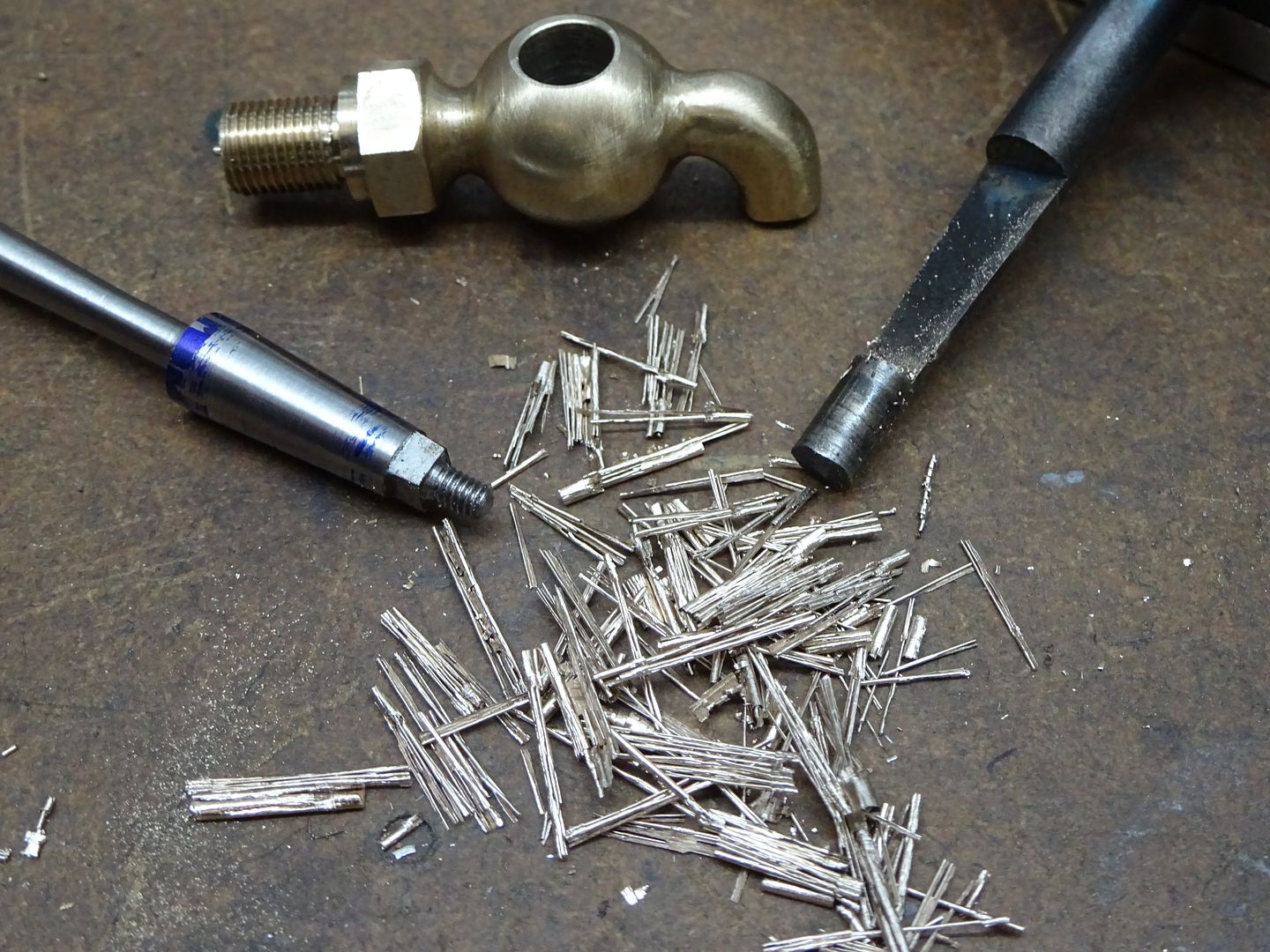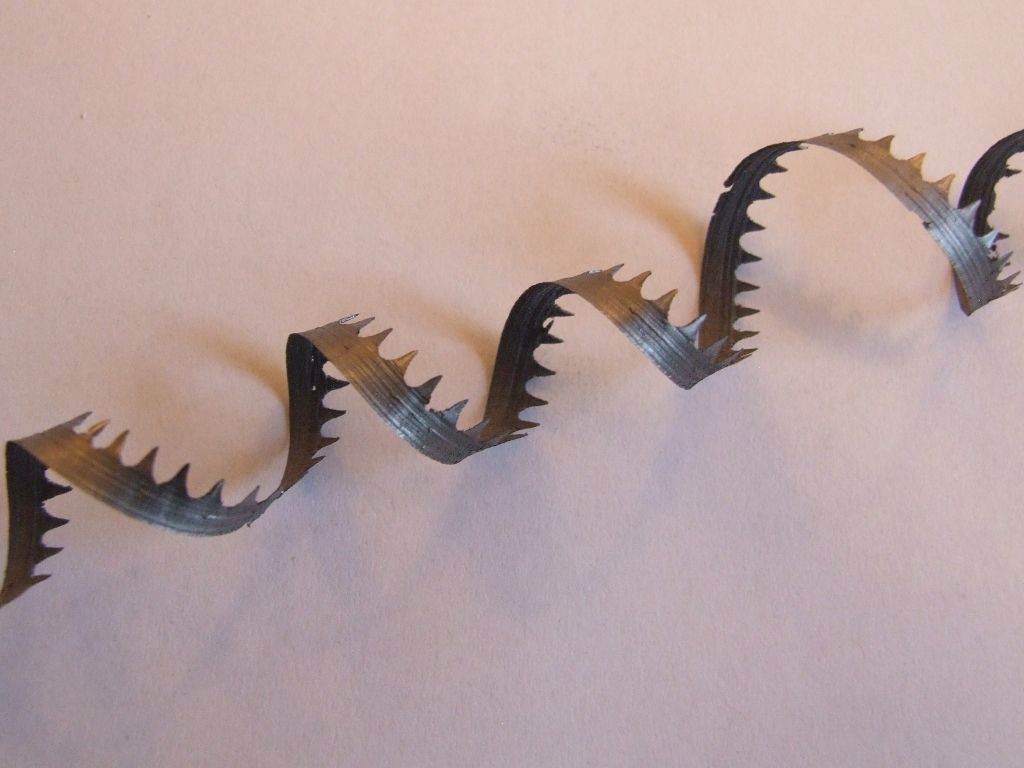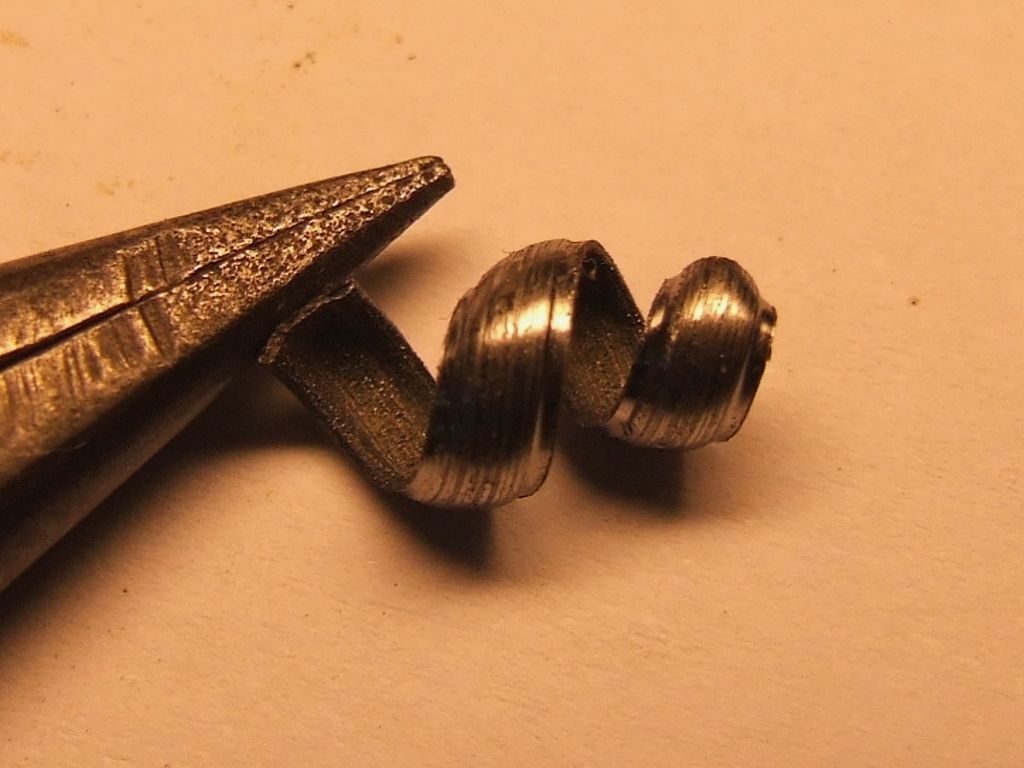The ultimate blow to my pride was a friend who thought my favourite hobby was making swarf. Shown a workshop full of equipment, he noticed a large pile of metal shavings on the lathe, but not the finished item in the chuck!
Later, after explaining I could cut threads, he picked up a DIY store bolt and said "what, like this?"
In the past turners competed to see who could produce the longest length of unbroken swarf. Great fun, but after about 1950 Industry realised it was better to chip-break swarf rather than allow ribbons. So particularly with Carbide, production machines produce sprays of chips, often smokin' hot because coolant isn't used. Less horsepower needed to remove hot metal, the chips are easily handled, and the scrap value of clean metal is higher than swarf soaked in cutting fluids.
I hadn't thought of swarf management as a problem until I came across a 'best lathe' debate between two American's on the web. They decided the winner was the machine that made it easiest to remove the ton and a half of swarf it produced each shift.
Flat out, my Chinese WM280 has just enough power and RPM to produce a spray of 'proper' carbide chips, but I never use it that way. The spray is operator unfriendly, which is why machines designed to use carbide efficiently cut inside a closed cabinet. Not sure the thrashing is good for a hobby lathe either! I use my lathe more sedately, happily switching to HSS and letting super-long ribbons of swarf form. They're quite therapeutic…
Dave
bernard towers.











